by Sharon Tucker
CAUTION: Spoilers abound.
Having had a bit of time to think about and see the latest Moffat and Gatiss Sherlock a time or two, I have to admit I like it now much better than I did initially. Somehow I had developed an unrealistic yearning to spend the whole action of the story in Conan Doyle’s era, enjoying Holmes and Watson exclusively in their original setting, but I was ignoring the essence of what Moffat and Gatiss always do with Conan Doyle’s characters and plots.
They turn the stories around. It’s obvious they have deep affection for these characters and stories because they are retold with humor and insight, but Moffat and Gatiss re-construct the well-known plots with unusual twists or they always employ an unorthodox perspective on the standard canon. Rather than complaining because I didn’t get my way, I decided to submit to a reality check then I got over myself enough to enjoy The Abominable Bride on their terms.
Seen as a whole, the AB takes us in and out of the drug hallucination Sherlock is experiencing as he flies back home from five minutes of exile for killing Charles Augustus Magnusson because according to broadcast television evidence, James Moriarty is still alive and all London is in a panic.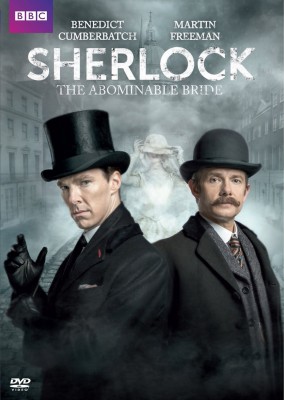
I’m not sure we needed a three season re-cap for starters, but wasn’t it fun to see that same recap set in the late 19th century to properly set the stage for the AB? Noting even more non-sequiturs from the characters than usual, we begin to understand that their numerous offbeat quips and some of the overall plot oddities are allusions to the end of known civilization, especially since the world of Victorian England often rumbles and shakes ominously (like jet engines) throughout the episode. But what is threatening to tear their world apart? Is it Moriarty? What could be so insidious a threat that it endangers the fabric of life as they know it?
As I see it, the primary plot unfolds as a nervous Lestrade recruits Holmes and Watson to unravel a frightening suicide case: Emilia Ricoletti dressed in her bridal gown and veil has risen from the grave to kill her husband, Emilio. Holmes dismisses the case as a trick and likewise the five subsequent murders of men in similar circumstances as tiresome copycats of the Ricoletti suicide/murder case until he is approached by the wife of Sir Eustace Carmichael to protect her husband from this same Mrs. Ricoletti.
Despite their efforts, Sir Eustace is fatally stabbed, but when a note appears on his body that was markedly absent as Holmes first examined the corpse just moments before, the plot and character oddities we have previously ignored begin to appear startling. Even Homes is visibly shaken. (BTW, Emilia Ricoletti, Thomas Ricoletti and Sir Eustace Carmichael are mentioned in The Musgrave Ritual much in the same glancing fashion as are the giant rat of Sumatra and the adventure of the aluminium crutch.)
When the scene shifts uneasily to the Diogenes club, what in earlier episodes has been diverting banter about intelligence between Mycroft and Sherlock in the previous three seasons takes a sharper, hurtful turn. Particularly disturbing is Sherlock and Mycroft’s ugly bet estimating how long the dreadfully obese Mycroft has to live, harking back to Sherlock’s toying with the capsule of death in A Study in Pink. (Canon or no, Mark Gatiss clad in a fat suit and makeup really gave me a turn.) Here in the Diogenes Club, the ominous rumbling is even louder, as Mycroft intones that an invisible enemy threatens their way of life and that this enemy must win.
In true nightmare fashion, throughout the rest of AB, Sherlock confronts not only the insidious Moriarty in nineteenth century England but he also wrestles with multiple incongruities. Sherlock’s tangled fears and insecurities mirror conservative apprehension of the inevitable change in gender roles that Women’s Suffrage necessarily hallmarked. Coming face to face with feminism is that twist, an unusual perspective which Moffat and Gatiss clothe in the guise of a secret society, complete with orange pips, robes, pointed hoods and ominous chanting deep within a murky crypt.
Though Mycroft was ahead of him on this, it is as if Sherlock suddenly sees and then catalogs for us many of the abuses that that gave birth to the women’s movement, but he certainly didn’t conjure the Abominable Bride as Moriarty ? leave that to Moffat and Gatiss, because Conan Doyle was deeply conflicted about it. By the end, even though Lestrade and Sherlock have dug up Emelia Ricoletti’s remains, he is still in the dream’s grip and literally swan dives into the Reichenbach Falls in order to land safely back into reality. I was relieved that this reality is kind in comparison to the no-frills interior of Sherlock’s mental construct. In fact, I loved it!
As you can see, as far as I’m concerned, the case of the Abominable Bride was satisfying on multiple levels. The look of it worked beautifully. I enjoyed seeing the characters react in appropriate Victorian fashion to the plot’s development, but do you really think Watson would have patted Mary indulgently and indicated to her that her duty was to have dinner prepared for them later on?
That and Lestrade’s heightened dimness gave me pause, however, the icing on the cake is that although Moriarty is still dead as the special ends he seems to be back and we are to pick up with him again in season four. THIS I want to see!
Check out other mystery and fantasy related articles, reviews & short stories in our Books & Tales category.
You can click on this link to purchase the DVD. If you have adblocker on you may not see the link:




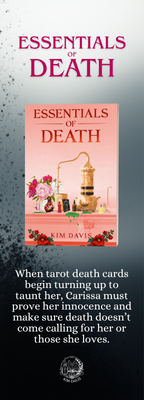
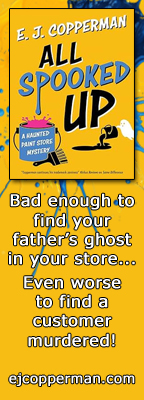

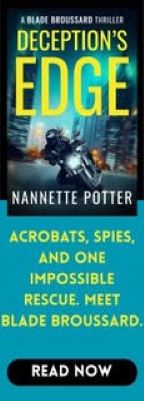







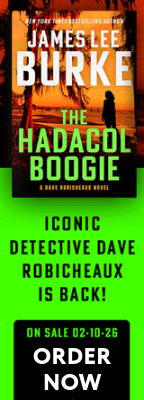

I love Sherlock. Great show! Only problem is there are not enough episodes to watch. Wish they would film more.
I greatly enjoyed this very creative installment of Cumberbatch/Freeman’s Sherlock. I was thrown by the time traveling, but easily looked at it as a dream-state Holmes used to deal with his insecurities. The 19th century piece was a delightful nod to my favorite Holmes incarnation with Jeremy Brent. I had hoped this was episode 1 of a set, so I was disappointed that I will be waiting longer for more stories.